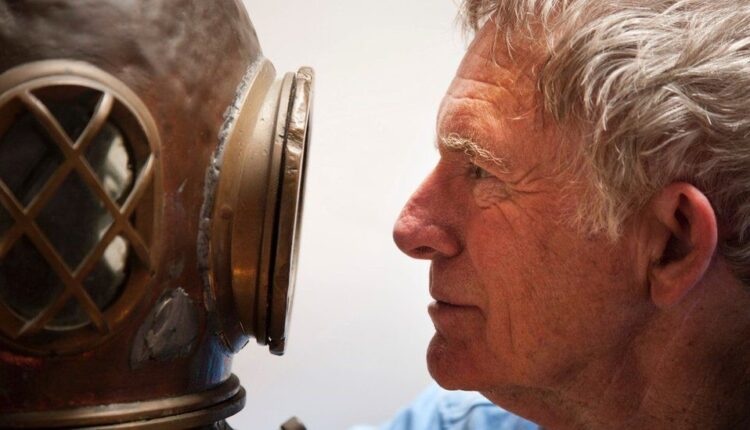Ocean explorer Captain Don Walsh has died at the age of 92. More than 60 years ago he made the first ever descent to the deepest place in the ocean, the Mariana Trench which lies almost 11km (seven miles) down. I was lucky enough to count him as a good friend. This is the story of an extraordinary dive by a remarkable man.
In 1960, space-mania was gripping the world and would-be astronauts were dreaming of their first forays skywards.
But 28-year-old Captain Don Walsh had his sights set very much downwards. He was about to descend deeper than any human had ever ventured before.
The US Navy had acquired a submersible called the bathyscaphe Trieste and Don, a submarine lieutenant, volunteered to join the project.
But when he signed up for the mission, the deepest he’d been in a sub was just 100m down. He was in for a bit of a shock – the US Navy wanted him to dive more than a hundred times deeper.
The plan was to head to the deepest place on the planet, the very bottom of the Mariana Trench, a narrow, underwater canyon, which lies in the Pacific Ocean, off the coast of Guam.
“My first reaction was ‘What!? Why didn’t they tell me before I volunteered?'” he told me in an interview in 2011.
“After that, I thought: ‘Well, I knew the machine well enough at that point to know that, theoretically, it could be done and we could pull it off.'”
On 23 January, 1960, Don and Swiss oceanographer Jacques Piccard, who had designed the bathyscaphe with his father Auguste Piccard, began their descent beneath the waves.
They squeezed inside a thick steel-walled chamber. Don said the space was about the size of a large household refrigerator, and that the temperature inside was just about as cold too.
As the pair plunged slowly into the darkness, the craft began to creak and groan as the pressure grew.
The bathyscaphe had been built to withstand more than 1,000 times the pressure at sea level, but it had never been tested to its limits at these kinds of depths until now.
The start of the dive went smoothly, but at around 9,000m, the bathyscaphe jolted with an alarming bang.
“That was unusual – we’d never heard that before,” Don later told me.
It sounded like something big had broken. Don and Jacques carefully checked their instrument readings, but everything seemed OK, so they decided to go on.
After five hours, slowly heading ever deeper, the depth-gauge passed 10,000m – but there was still no sign of the sea floor.
They began to wonder just how far down they would have to go.
But finally, the glow of the bathyscaphe’s lights began to reflect back towards them. Don and Jacques had made it: at almost 11km (seven miles) down, they were at the very bottom of the Mariana Trench.
“After we landed, we stirred up a lot of sediment because that bottom sediment is semi-liquid,” Don said.
“It was like looking at a bowl of milk – so we never got a photograph of the deepest place in the ocean.”
There weren’t any whoops or cheers at the end of this epic, record-breaking descent.
“It was just a quiet moment,” Don recalled.
The pair spent about 20 minutes on the seafloor. While inspecting the craft they discovered the source of the bang they’d heard earlier.
An acrylic window inside the entrance hatch had cracked. Thankfully it wasn’t a pressure boundary – if that had been the case it would have caused an instant implosion.
They were able to make it safely back to the surface.
The team had made history, receiving the Legion of Merit from US President Dwight D. Eisenhower among other medals and plaudits.
Source: BBC


Comments are closed.